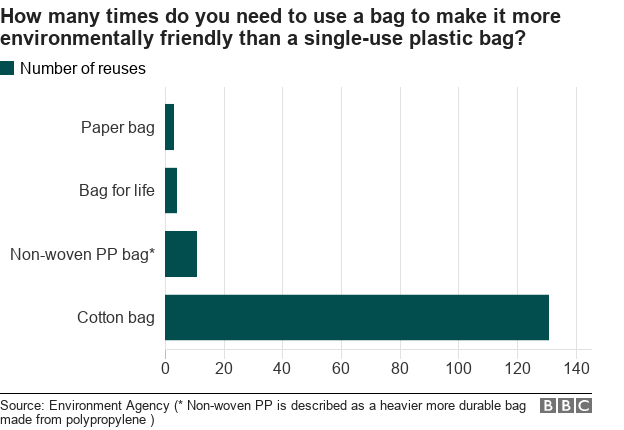Is paper really more sustainable than plastic?
Posted in: Helping Harry's Planet 8th March 2022
Plastics used for packaging and other single use applications has come under a lot of scrutiny in recent years as the focus on sustainability rises and spreads globally.
A European consumer preferences survey, commissioned by Two Sides in 2020, concluded that 62% of consumers see paper and cardboard packaging as better for the environment and 70% of consumers that were surveyed said they were actively taking steps to reduce their use of plastic packaging.
Plastic is made directly from fossil fuels, a non-renewable resource. It is estimated that 4% of the world’s oil production is used as a feedstock to make plastics. We have therefore categorized plastic as “poor” when it comes to a renewable, sustainably grown material. However, the plastic manufacturing process itself actually requires less energy than paper manufacturing - making paper from trees is dirty work!
Consumers today widely view paper as a more environmentally friendly alternative to plastic. But how do the two materials really compare? And what is the most sustainable solution?
 Around 40% of trees cut down each year are made into paper products
Around 40% of trees cut down each year are made into paper products
 The amount of wood to make paper products has doubled since the 1960’s
The amount of wood to make paper products has doubled since the 1960’s

At the COP26 conference held in Glasgow November 2021, deforestation was discussed and steps were laid out to halt and reverse forest loss and land degradation by 2030. Here’s a summary of the focus points to achieve this goal…
- Conserve forests and accelerate their restoration
- Facilitate trade and development policies that promote sustainable development
- Increase, and improve effectiveness and accessibility of, finance and investment to enable sustainable forest management, forest conservation and restoration
- Ensure robust policies and systems are in place to accelerate the transition to an economy that is resilient and advances forest, sustainable land use, biodiversity and climate goals
So, if we’re using more paper are we are actually making this forest loss target unachievable?
We’re often told to save paper to save trees, however there’s huge variability in how sustainable the wood supply chain actually is. In countries where forests are not sustainably managed, important habitats can be destroyed. However, in responsibly managed areas (certified by FSC or PEFC), sometimes using more paper can bizarrely lead to more trees! That’s because many organisations have set up schemes to plant several trees for each one that is felled. According to the USDA Forest Service, 1.7 million trees are planted each day by the US lumber industry.
Perhaps the biggest game-changer in the paper world has been recycling. Paper is relatively easy to recycle as it can be re-pulped, does not rely on chemical reactions and is less sensitive to contamination. Not only does recycled paper save trees, but it also drastically reduces the amount of resources it uses up. According to one estimate, for every ton of paper that is recycled, 17 trees are spared – along with 380 gallons of oil, 2.29 cubic metres of landfill space, 4,000 kilowatts of energy, and 7,000 gallons of water.
Paper is widely recyclable and decomposes much more quickly than plastic, and therefore it is less likely to be a source of litter and pose a risk to wildlife. Plastic bags can take between 400 and 1,000 years to decompose!
Whilst plastics can be recycled too, it is currently difficult to achieve high levels of post-consumer recycled content in plastics due to post-consumer waste contamination.
We recently attended the Environmental Packaging Summit where various competent speakers ran through some insightful statistics.
 40% of the world's plastics are single use plastics
40% of the world's plastics are single use plastics
 A garbage truck of plastics enters oceans every minute which is 8million tonnes per year
A garbage truck of plastics enters oceans every minute which is 8million tonnes per year
Almost all plastics can be recycled into something. Historically, plastics were not turned back into their original materials. Plastic bottles become materials for park benches, Styrofoam becomes picture frames, and plastic bags become composite lumber. However, new innovations are making it more common for plastic to be recycled back into its original use. For example, CarbonLITE Industries recycles more than 2 billion PET bottles into food-grade post-consumer PET and is one of the largest producers of food-grade recycled PET in the world.
However, the plastic recycling process is a lot more complex than paper recycling. Plastic is melted and formed back into pellets and then used again to create raw materials like film and mailers through a process of heat-based molding or blowing. Because recycled plastic has contamination and ink, recycled plastic feedstock is lower quality and less consistent than virgin plastic pellets. Unstable resin can stop and break machines because its melting point or reaction to heat is too unpredictable. This can lead to wasted resources going into the creation of unusable goods. As such, manufacturers of recycled plastic material must find the right blend of virgin, post-consumer and post-industrial plastic for their particular machines and end use cases.
In contrast, paper is fairly easy to recycle. It is a non-synthetic material of which the manufacturing process does not rely on chemical reactions. It can therefore be re-pulped and put back into the paper mill / manufacturing supply chain fairly readily. It is also more forgiving of contaminations that might occur in the post-consumer waste stream and, as such, it is much easier to make 90% and even 100% post-consumer recycled paper than it is to make 100% post-consumer recycled plastic. We have therefore rated paper as “good” on ability to use recycled content.
 In 2005, 50% of the world’s demand for paper came from recycled paper, in 2018 it was recorded that figure was at a record 72%
In 2005, 50% of the world’s demand for paper came from recycled paper, in 2018 it was recorded that figure was at a record 72%
It seems that one of the biggest concerns with choosing paper over plastic is its durability and reusability.
In 2006, the Environment Agency conducted an investigation as part of a Supermarket chain’s decision to switch from plastic carriers to paper. The EA team examined a range of bags made from different materials to find out how many times they need to be reused in order to have a lower global warming potential than a conventional single-use plastic bag. Below are the results.

Despite plastic’s more durable advantages, it still brings us back to that fact that it is made of a non-renewable resource, whereas paper is made of trees.
Whether paper or plastic is the most sustainable substrate for packaging will largely depend on the application. However, at Valley Northern we believe the real focus should be on reducing all single-use packaging, reusing, recycling and choosing products that contain recycled materials.
View our range of plain Paper Bags, NHS Paper Bags and recycled content Plastic Carriers.
Catch up on other blogs in our Steps to Sustainability series...
Sustainability: where have we come so far?
'Biodegradable' and 'Compostable' vs. 'Recyclable'
